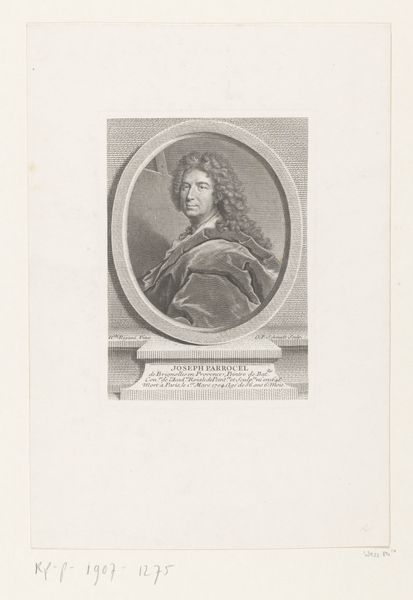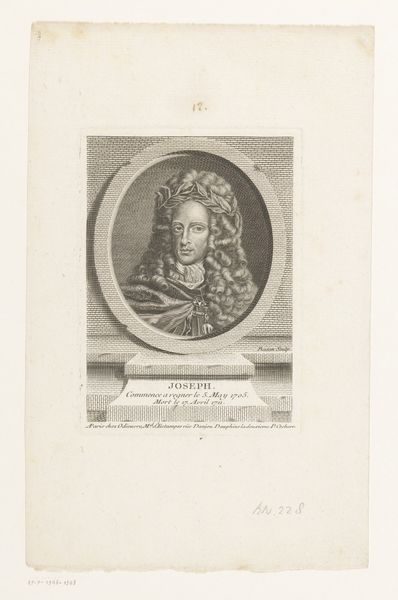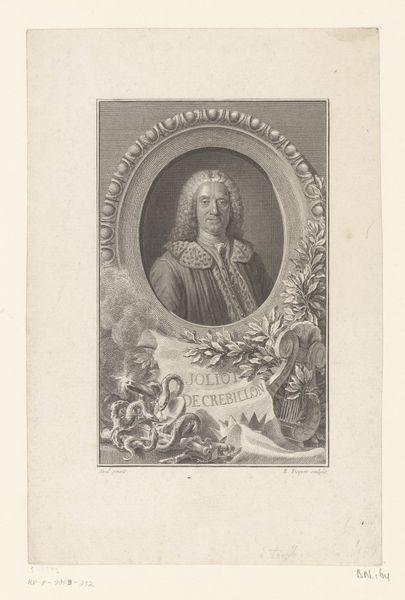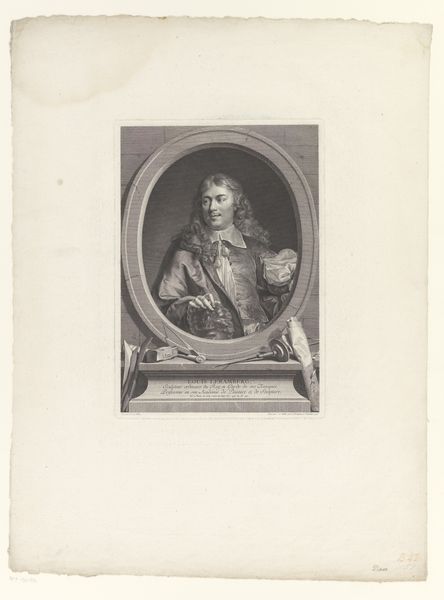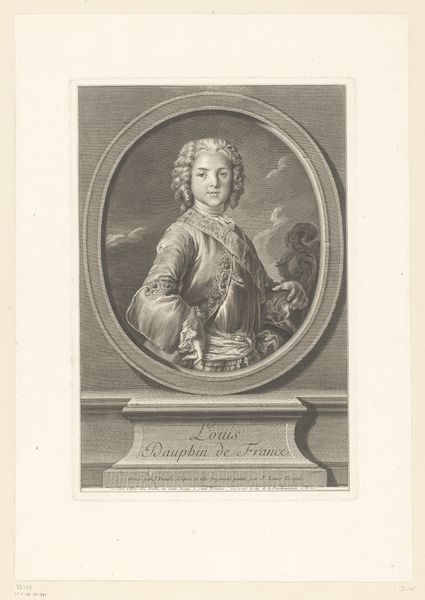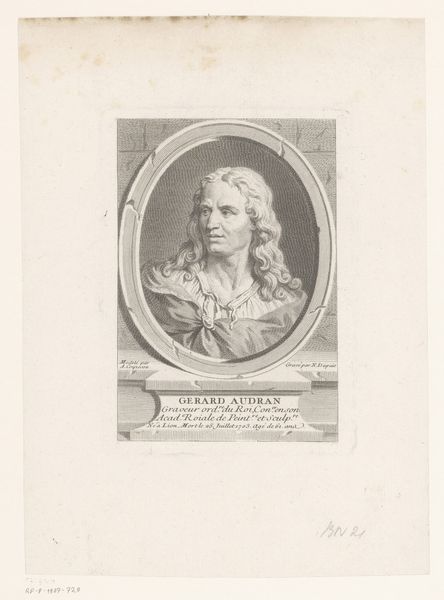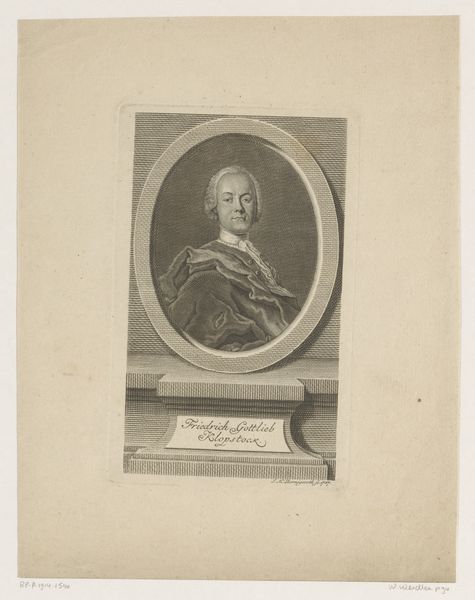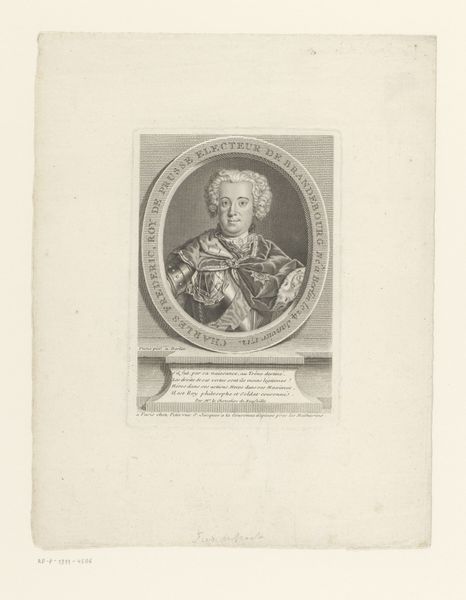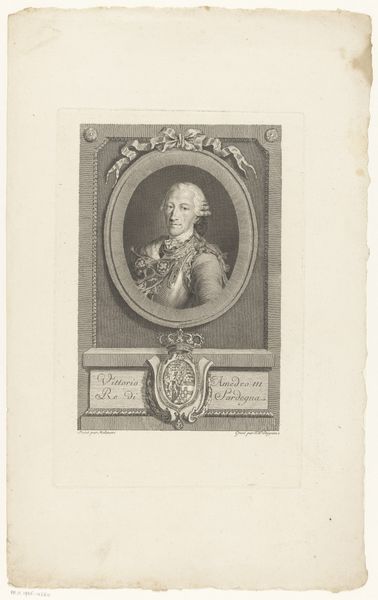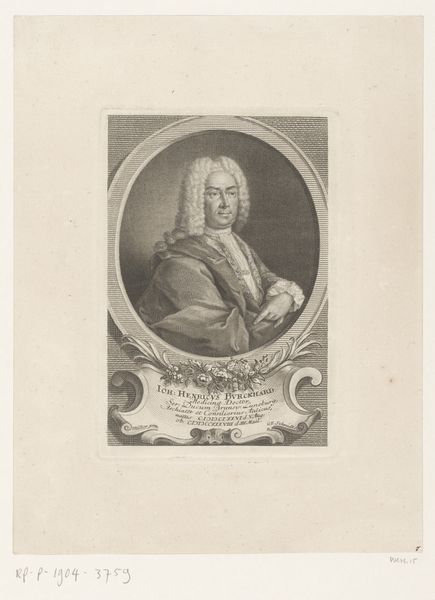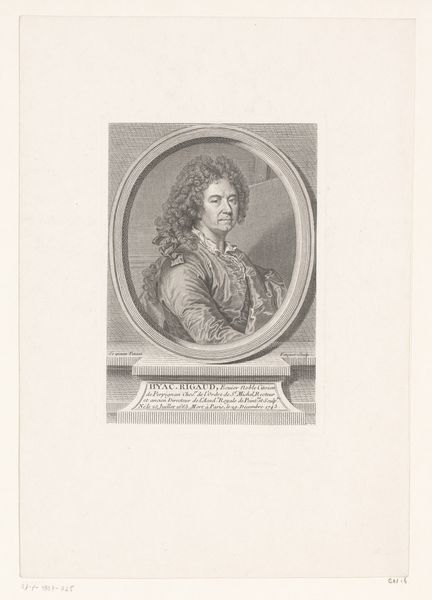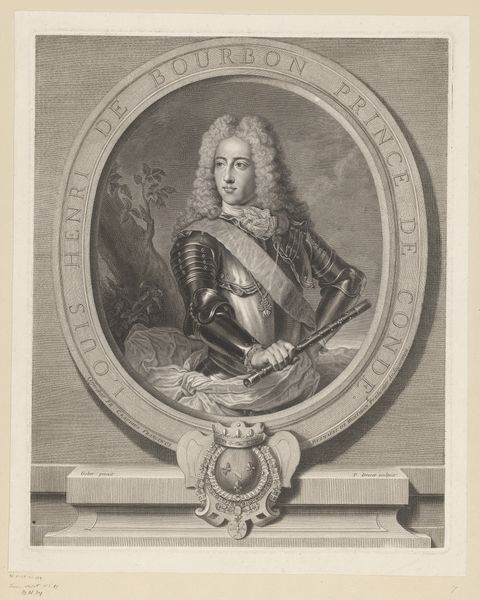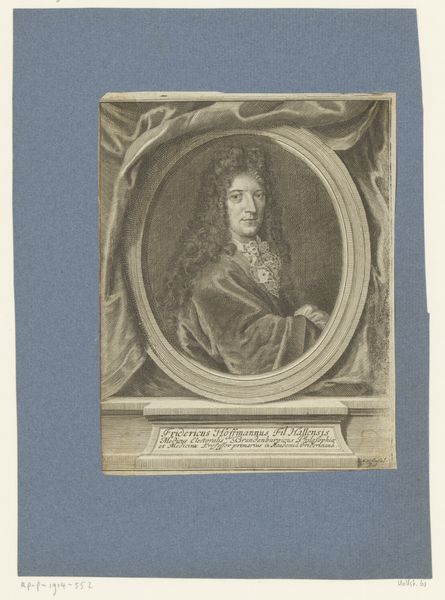
print, etching, engraving
#
portrait
#
baroque
# print
#
etching
#
old engraving style
#
academic-art
#
engraving
Dimensions: height 156 mm, width 112 mm
Copyright: Rijks Museum: Open Domain
This is Johann Georg Wille’s portrait of Nicolas de Largillière, made sometime in the 1700s using the technique of engraving. The image is realized through an intricate network of tiny lines incised into a metal plate, a testament to the engraver’s meticulous skill. Look closely and you'll notice the texture of the face, the voluminous wig, and the folds of the sitter’s lavish robe, all rendered through the precise manipulation of line and shadow. This was a laborious, highly specialized craft, often involving years of apprenticeship. Prints like this played a crucial role in disseminating images and ideas across Europe. They were luxury goods in their own right, but also a means of reproducing paintings and sculptures for a wider audience. Consider the social implications: while Largillière, as a painter to the King, occupied the highest echelons of the art world, Wille, as an engraver, was part of a skilled workforce that helped to circulate and amplify Largillière’s fame. This print invites us to consider not only the image it represents, but also the complex system of labor and skill that brought it into being.
Comments
No comments
Be the first to comment and join the conversation on the ultimate creative platform.

